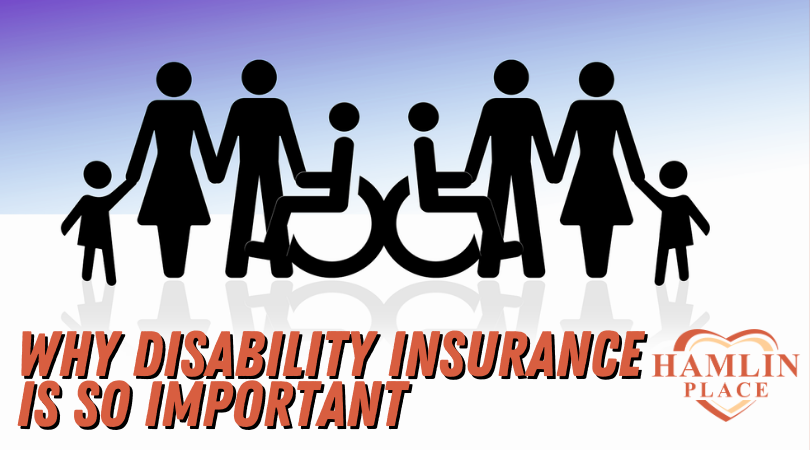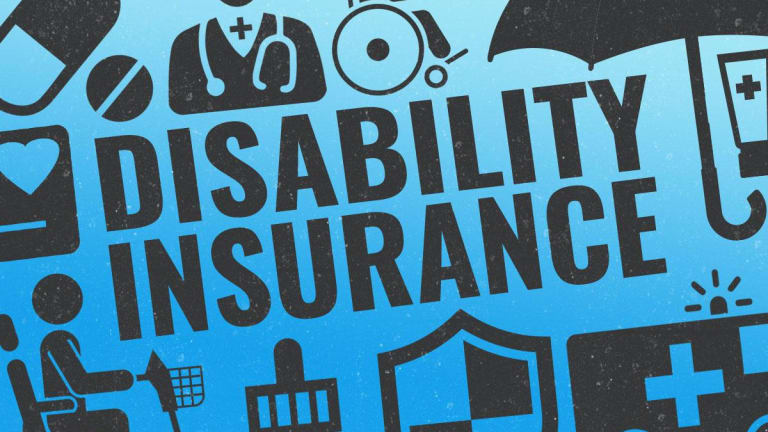
Why Disability Insurance Is So Important
When you have a disability of any type, your time, energy, and emotions are heightened as you begin the journey to learn all you can use to regain the best quality of life that you can, given your particular circumstances. If you are married and if you have children, trying to communicate with them what is going on with you, as well as to your doctors, becomes a difficult chore. Disability Insurance becomes a necessity, not a luxury.
With all of this chaos in your life, the absolute last thing that you need to worry about is money! What if I can’t work any longer? How will the bills be paid?
Perhaps you are saying that you do not need any disability insurance. Consider the following.
Disability Statistics[1] The odds of a person having at least one long term disability (LTD) that lasts three months or longer before that person reaches age 65.DISABLED: (1999) According to the Disability Management Sourcebook, the number of folks between 17 and 44 with severe disabilities has increased 400 percent over the past 25 years. One in seven people will become disabled for five years or more before they reach 65. ODDS, STATISTICS, AND DISABILITIES: (1999) The chances of using your homeowner’s insurance are about 1 in 88. The odds of using your auto insurance at about 1 in 47. The possibility of using your LTC insurance is about 2 in 5. One out of two women and one out of three men will spend some time in a nursing home. (Journal of the American Society of CLU, 1996) More than 12 million older Americans will require some form of long term care by 2020. (Health Insurance Association of America). 72% of residents in a nursing home are women 90% of nursing home residents are over the age of 65. 22% of the disabled population is under age 65. (Puget Sound Life Underwriters Journal 1996). Functionally disabled people between the ages of 18 and 64 represent 40% of Americans needing long term care services. (Life Insurance Selling 1995)
The likelihood of needing LTC (obviously) increases with age. In 1991, 29.2% if those aged 45- 64 had a disability; 44.6% between 65 and 74 had a disability; 63.7% between the ages of 75 to 84. 15.3% and 41.5% respectively had a severe disability. (Employee Benefit Research Institute, 1995) 80% of disabled persons are cared for at home or in adult daycare centers. 72% of caregivers are family or friends. (Puget Sound Underwriters Journal). The cost of home care can run from $4.25 to over $200 daily, depending on the skill needed (SF Chronicle, 1995). Caring for each Alzheimer’s patient will cost more than $213,000- on top of other medical expenses- over the remaining five years of their lives. (American Journal of Public Health, 1994). Over 99% of nursing home care is either custodial or intermediate care, not skilled care, and is not covered by Medicare or Medicare supplements (Journal of the American Society of CLU’s, 1996).

Reasons People Take STD and LTD Leading the list of Top 5 causes of short-term disability (STD) workplace absence for 2001 was pregnancy (normal), followed by complications from pregnancy, injuries (excluding back), back conditions and digestive/intestinal conditions. The causes of claims and the percentage received for each reason were as follows: LTD – 13 percent – Cancer, 12 percent – Complications from Pregnancy, 11 percent – Back, 9 percent – Cardiovascular, 5 percent – Depression (2003) every year 12% of the adult U.S. population suffers a long-term disability. One out of every seven workers will hurt a five-year or more extended period of disability before age 65. If you’re 35 now, your chances of experiencing a three-month or longer disability before you reach age 65 are 50%. If you’re 45, the figure is 44% STD – 20 percent – Pregnancy (Normal), 9 percent – Pregnancy (Complications), 9 percent – Injuries (Excluding Back), 8 percent – Back, 8 percent – Digestive/Intestinal.
The primary sources of disability insurance are STD and LTD. It is essential to see if your company offers these insurances. If they do, make sure that you are covered. If they don’t, you can get personal STD and LTD. By visiting the following website, you can get more information about disability insurances.
How Much Disability Insurance is “Enough”? Research shows the following about employer-offered STD (short term disability) and LTD (long term disability).
Disability Insurance: ( 2003) In small private firms, fewer than one-quarter of workers have short-term disability coverage (22%). Just 13 percent have long-term disability income insurance, according to the Bureau of Labor Statistics.
Half of the workers at large employers (100 or more employees) have short-term disability income insurance (47%), and more than one-third have long-term disability coverage (40%).
Disability coverage (American Council of Insurers 2004) 82% of employees lack inadequate coverage.
The Society of Actuaries says that only 2.5% of employees have individual disability coverage (i.e., paid for by the employee and not the company).
If you have already read the other blogs about Disability insurance, you know how important it is to know about what insurance types you have and how much each insurance will payout if and when you need it.
Now, you know how much your STD and LTD will pay out each month. The question is, how much SHOULD YOU HAVE?
There are some simple ways to determine just how much is “enough”, and it varies for each family.
1) Sick leave – maintain at minimum five days, and, at best, ten days. This way, you will be able to meet a usual time gap before your STD kicks in.
2) STD – most STD policies cover up to 26 weeks. To ensure that you have “enough” STD TIME coverage, the weeks should cover your LTD’s elimination period.
3) LTD – timewise, you will want your LTD plan to cover you until your retirement age. (Note, not all retirement ages are at 65. The retirement ages are increasing; make sure that you know your specific retirement age.)
Now, let’s talk about money. To calculate how much money is needed by you and your family, consider the following.
For each month, note the following.
1) OUTGO Your “must pay” expenses (including, but not limited to the following: house payment; utilities; car and gasoline; medical expenses; any child care; any loans, credit cards, etc.)
2) INCOME ON DISABILITY Adds together any income other than yours (i.e., spouse’s income) plus whatever you will receive every month from your company-paid STD and LTD. Add to this amount whatever savings you have, and how long this would last.
The gap between income on disability and outgo would be the amount of income that you might want to offset with a private LTD policy.
WHY THE NEED FOR DISABILITY INSURANCE BENEFITS?
What are the odds?: (2005) in the next hour, 194 people will be injured in car accidents, 57 homes will catch fire, 230 people will die, and 1,027 will become disabled.
Here are the latest disability trends that concern you. Ø Today, we live harder, work harder, and play harder than ever before. As a consequence, there has been a dramatic increase in disabling injuries and illnesses. Ø In the past 25 years, the number of severely disabled people ages 17 to 44 has increased by 400 percent. While the number of people with protection has also increased, most Americans still have a disability income protection gap. Ø This is alarming when you consider in a year’s time, chances are only one in 1,200 of you will need your fire insurance—generally considered a necessity for homeowners—but one in eight (8) of you will be sick, injured or killed. Ø The risk of becoming disabled will continue to increase.
Aging is the primary factor. Ø Because of advanced trauma and cancer care, more people today survive illnesses and injuries that were deadly 20 years ago. In 1930, the average U.S. life expectancy was 61; today, it is 76; and by the year 2050, it will be 82. Today, there are 3.6 million Americans over age 65; by 2040, there will be 13.8 million. Ø With Americans now living longer, the generation has and will continue to have a profound impact on disabilities. According to the National Association of Health Underwriters, there are 3.74 disabilities per 1,000 people ages 45 to 49. This increases nearly five times more with age, to 15.18 disabilities per 1,000 people ages 60 to 64. Ø also, the traditional retirement age is moving up. More people are likely to work part-time after retirement, thus increasing the risk of a disability later in their life.
According to the Bureau of Labor Statistics, a changing workforce More than 10.5 million people are starting their own businesses, consulting, or working at home. And more women than ever are now working; many families today rely on two incomes. In the early 1900s, there were only 500,000 married women in the labor force. They represented just 4.5 percent of all married women. Today, about 39 million married women work outside the home (representing 60 percent of all married women), and 17 million have children under age six. Ø With more women working and families relying on two incomes, the need for disability protection has become more significant, especially since women are twice as likely to suffer a disabling illness than men. And with more people working out of their homes and earning substantial incomes, the need for more flexible, individualized protection is on the rise.
Increase in workplace disabilities Ø Over the years, the causes of disabilities have changed in the workplace. Ø Today, disabilities due to psychiatric conditions, severe back pains, Carpal Tunnel Syndrome, muscle/tissue disorders and Chronic Fatigue Syndrome are increasing dramatically. Among the most common long-term disabilities (those lasting longer than three years) are circulatory and heart conditions, back disorders, psychiatric conditions, general sickness, and subjective pain. Ø Common short-term disabilities (those lasting less than three years) include healthy pregnancies and pregnancies with complications, injuries, muscular or skeletal problems, and psychiatric or substance abuse issues.









